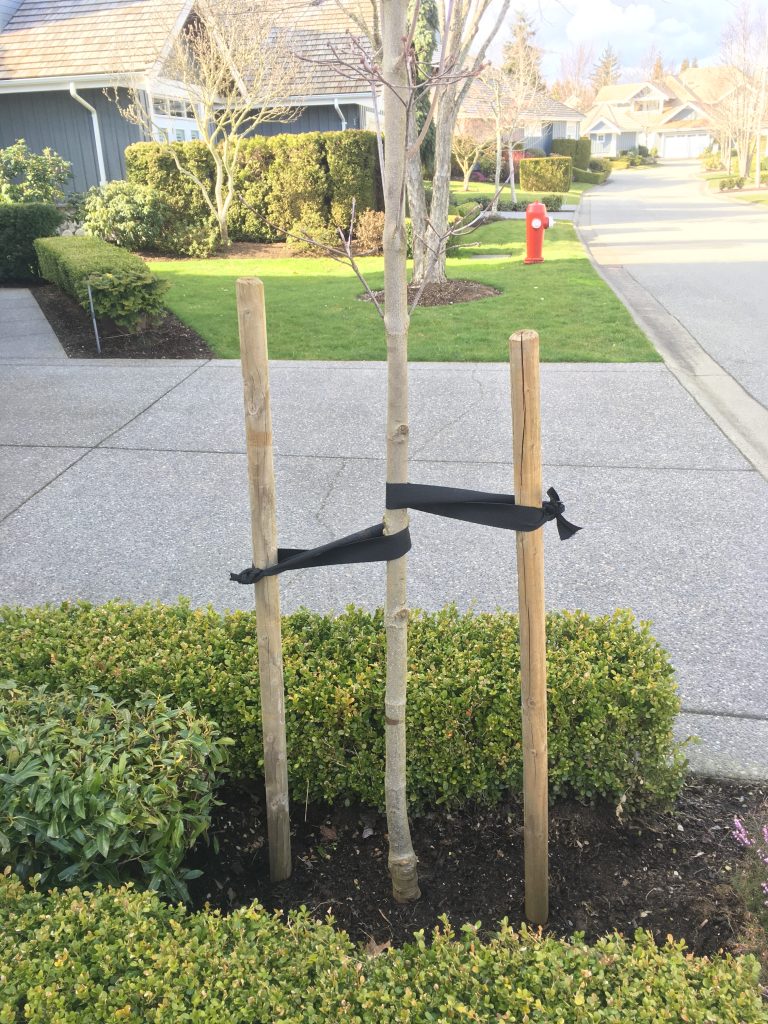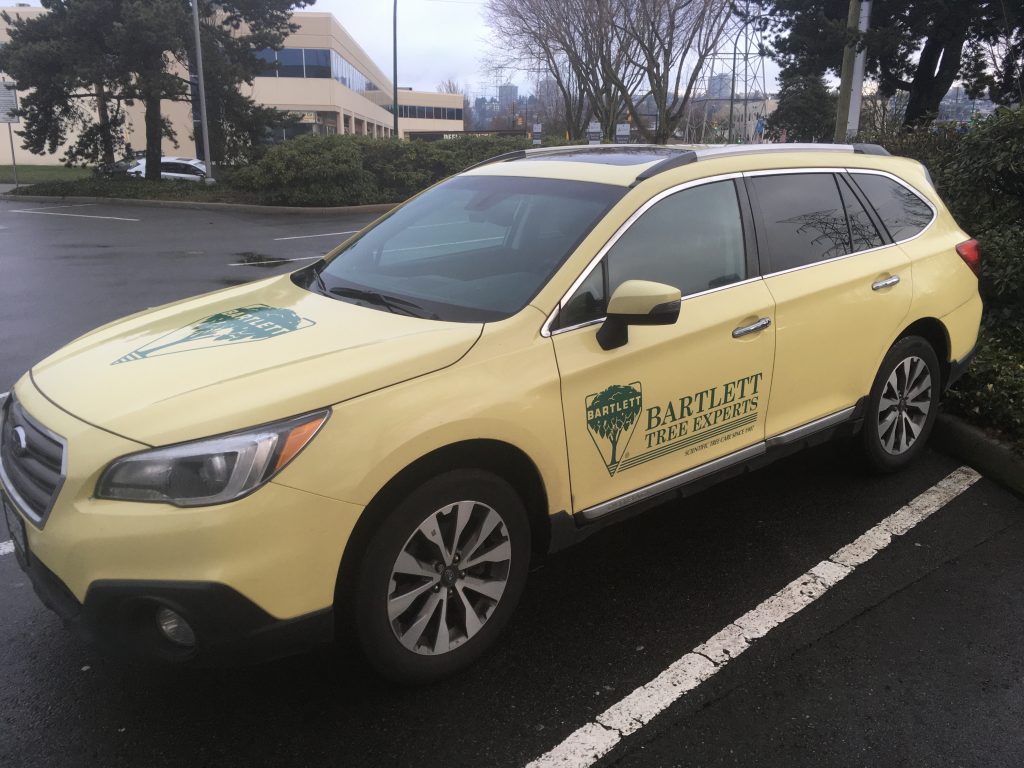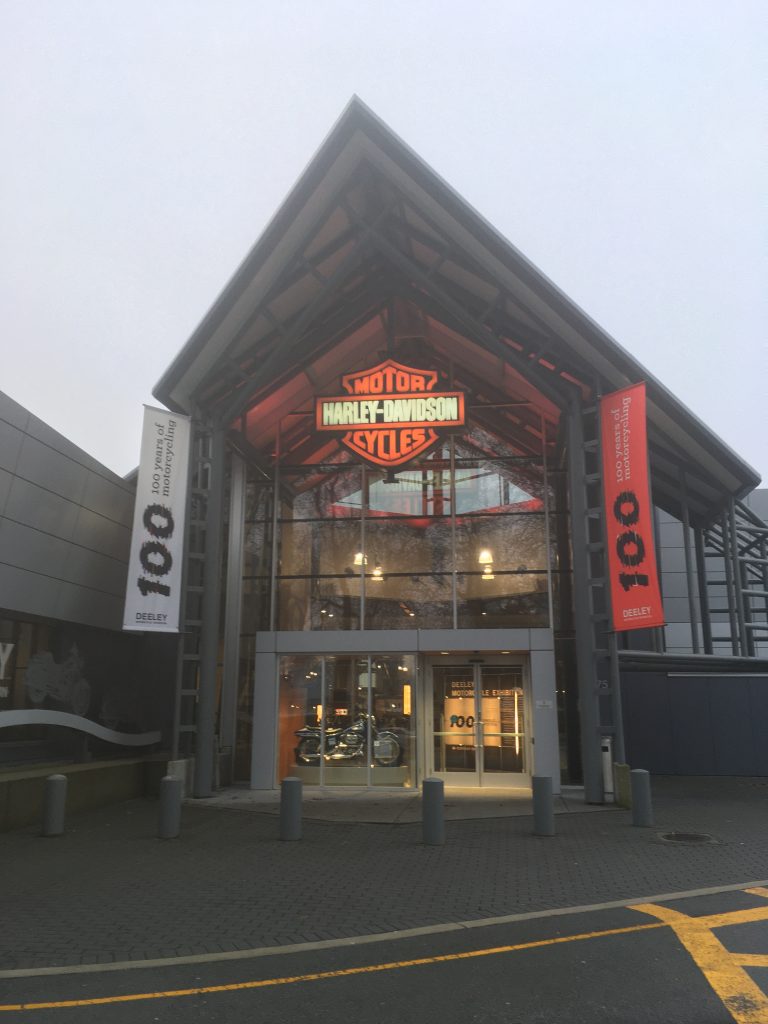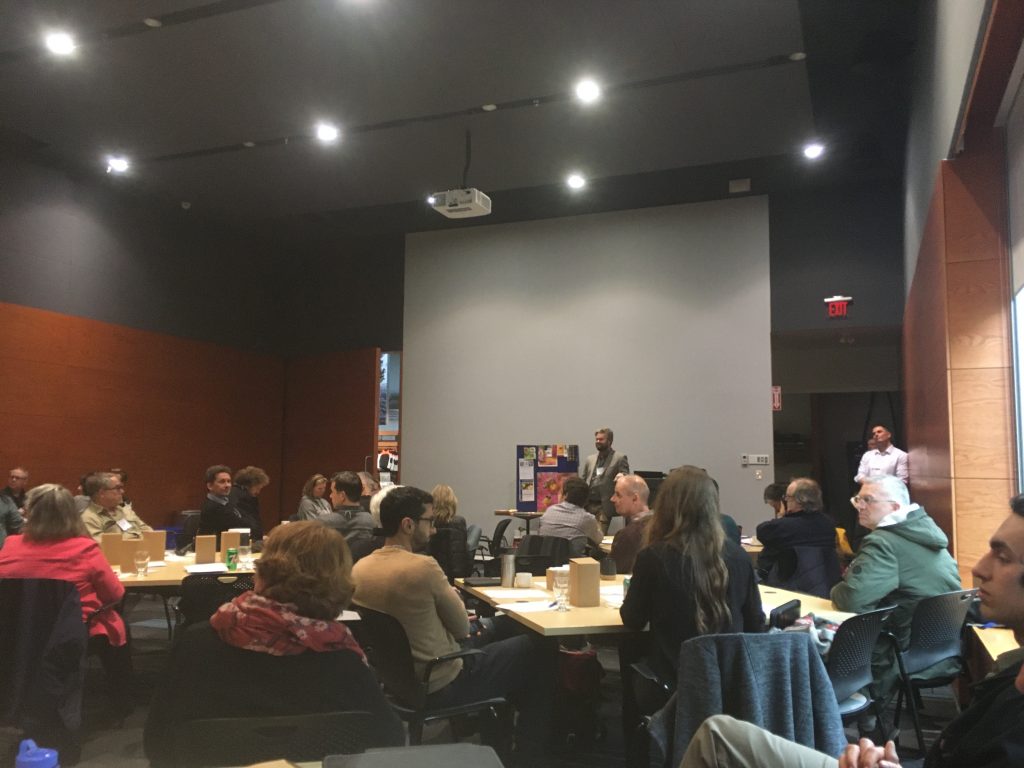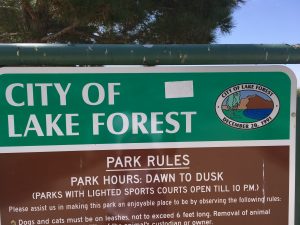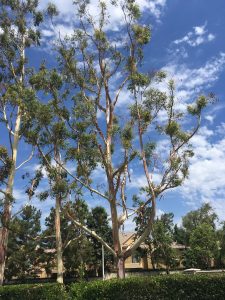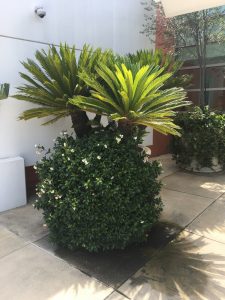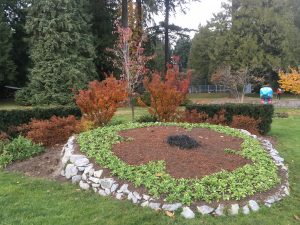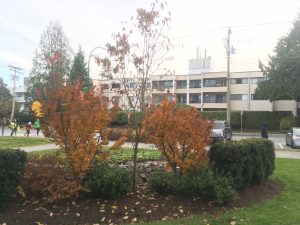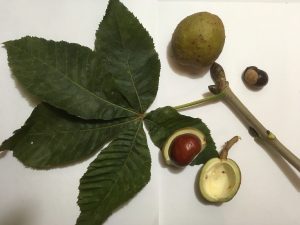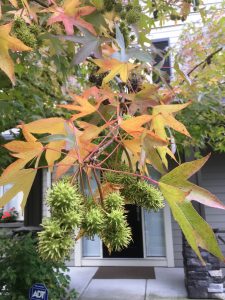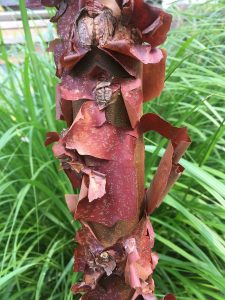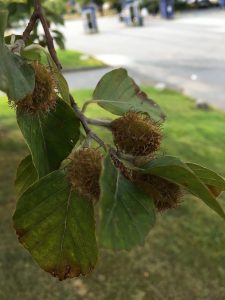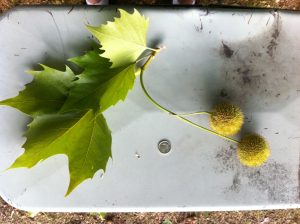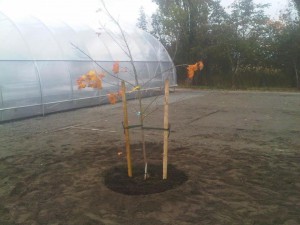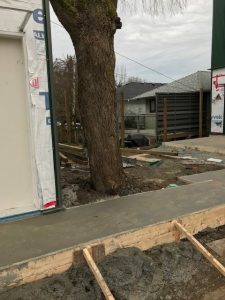Why so sad?
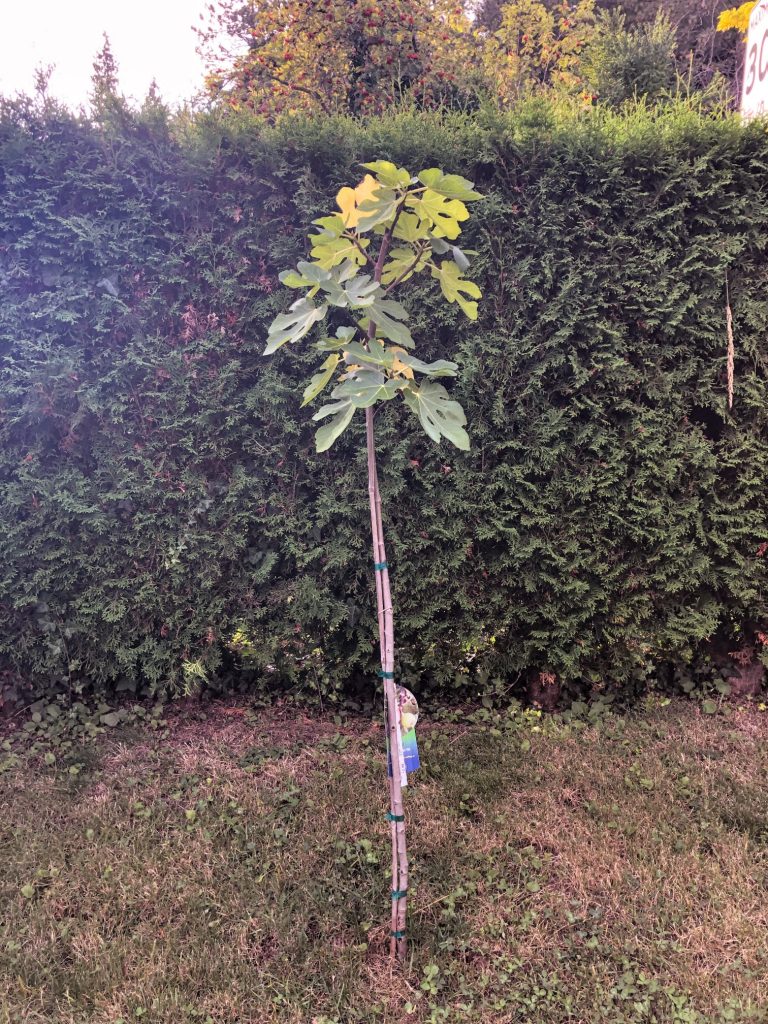
When you buy a fig tree, you definitely expect to harvest some figs after three years. And yet, here we are, three seasons in and the tree looks pretty sad. Why?
There are many possible reasons. So, let’s take a look at the most obvious.
Competition
Lawns are known to outcompete young trees planted in lawns like this one. Less water and nutrient availability means less growth.
One way you can help the tree is by establishing a tree well. The grass will not be a factor inside the tree well so the fine surficial tree roots can collect nutrients; and the well itself collects water. Adding a layer of mulch would keep the root zone cool and weed-free.
Speaking of water, it’s not clear how much water this fig tree received after planting. New trees require extra water so they can get established.
The tree well also eliminates any potential tree versus lawncare machine collisions. I can’t say for sure from the photo if the tree sustained any injuries. But, I wouldn’t bet against it. By establishing a tree well, you create a nice buffer between the tree and machines.
When collisions do occur and the bark gets damaged, the tree must use up precious energy for repairs instead of growth. That means no figs for you.
Bamboo out
Nurseries install bamboo stakes so the tree doesn’t get damaged in transport or at the retail center. The bamboo stake should be removed at the time of planting. Or, if you’re really worried, a few months later. I think the Canadian landscape standards recommend stake removal after fourteen months.
Keeping stakes on means that the tree never forms any reaction wood in response to windy conditions. It makes the tree weak and reliant on the stakes.
Also, the cedar hedge behind the tree could be depriving the fig tree of the sunlight hours it needs to thrive.
Case closed?
Be very careful when planting trees in lawns. Always establish a tree well around the tree and mulch it. Remove any staking and never get too close to the tree with your lawn mower or edger.
The owner of the fig tree received a lot of feedback and I hope she makes some changes. Soon.


